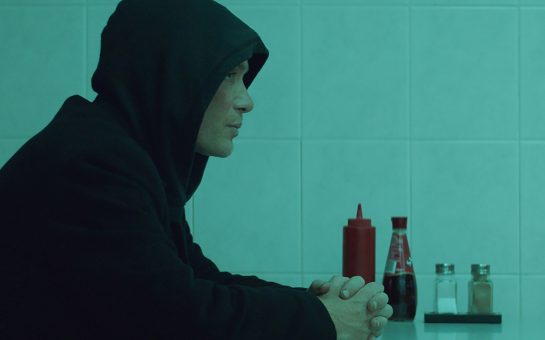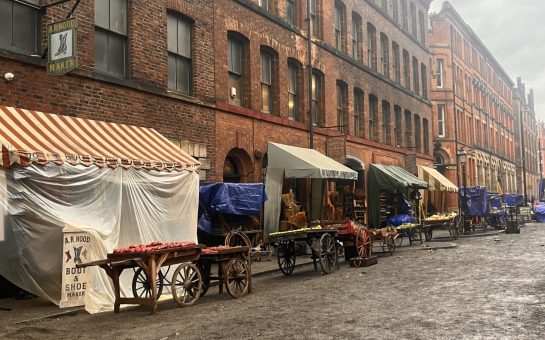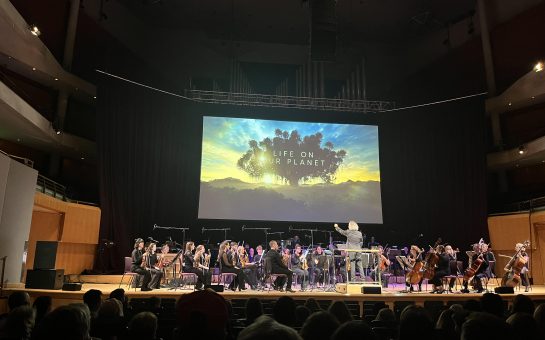So, the official story goes that in the 90s Netflix CEO Reed Hastings was so embarrassed by a $40 late-fee he incurred for a copy of the movie Apollo 13 at his local Blockbusters, that he came up with the idea for a company.
An online DVD postal-rental-service that worked on a monthly subscription basis, with no due dates, no late fees and no need to even get off the sofa or out of the house to venture to your local store.
“That’s a lot of crap,” said co-founder Marc Randolph to biographer Gina Keating, adding that this story was a “convenient fiction” – an apocryphal tale that could sell their vision of Netflix, exemplifying the benefits of their service in the process.
This story would grate on the founding team however since it put Hastings in the limelight, making the company all about him.
It all began in 1997, Scott’s Valley, California.
Hastings was a computer-engineer, in charge of a software debugging company Pure Atria. Noted for his cold engineering mind-set, he was passionate about the World Wide Web. He specifically enjoyed cracking computer algorithms. This passion would later lead to the Netflix algorithm, the winning code that generated recommendations for its users.
Randolph was his marketing director and had previously founded a separate computer mail order company. An affable people-person, he would guide Netflix in to becoming the consumer-centric company with the quirky aspect that we know and love. He wanted to replicate the Amazon online store model – then a fledgling company – only with something different than books.
Hastings liked the idea. He told the Mobile World Congress in 2017 that the idea for renting DVDs specifically stemmed from a maths problem.
Turing’s persecution fuels us to stand up for those that society may scorn today. Thank you, Mr. Turing, for all your accomplishments.
— Reed Hastings (@reedhastings) January 1, 2015
Computer scientist Andrew Tanenbaum asked students how much a bandwidth a station wagon would hold if full of VHS tapes. The answer lay in how many tapes the wagon could carry, how much data was in each tape and what speed the wagon could get to its destination.
This led Hastings to think about how much more bandwidth DVDs could carry.
He said: “When a friend told me about DVDs and I realized, well that’s 5 gigabytes of data and you know you can mail that very inexpensively, I realized that is a digital distribution network.
“And from that original exercise, it made me think we can build Netflix first on DVD and then eventually the internet would catch up with the postal system and pass it.”
The Silicon Valley duo hatched a scheme to see if DVDs would travel safely through the postal service, by sending it in the mail. Although, actually getting their hands on a DVD to do the experiment with proved tricky. This was back in the days of screechy dial-up internet and videos being the household norm. They had to use a CD-ROM for their experiment.
Hastings mailed the CD to himself and it arrived at his home unscathed.
He promptly sold of Pure Atria and invested $2.5 million in to the start-up project to take on the then $16 billion DVD and VHS rental industry.
Early struggles
“Netflix was originally a single rental service,” Hastings told website Inc. in 2005. “But the subscription model was one of a few ideas we had–so there was no Aha! moment. Having unlimited due dates and no late fees has worked in a powerful way and now seems obvious, but at that time we had no idea if consumers would even build and use an online queue.”
It wasn’t until 1999 that Netflix would employ the subscription model. This set them apart from the other rental services and they grew rapidly.
In the next year, however, Netflix only amassed 300,000 customers. Even worse, their customers were growing tired of the long wait time that the US mail service necessitated and this service was becoming costly for Netflix.
Netflix offered acquisition up to Blockbuster for $50 million. They proposed to rename the website to Blockbuster.com and continue to run the mail order service. Blockbuster rejected the offer.
Netflix’s problems continued. They had to lay off one third of their staff in a bid to stay afloat. Mitch Lowe, one of the founding executives, was poached from the company to competitor Redbox, a DVD rental kiosk service.
Randolph left the company as CEO in 2002 – the reasons behind his departure shrouded in mystery. At this point, all the founding members except for Hastings had left.
It wasn’t until after an initial public offering (IPO) selling $15 per share, raising $82.5 million that Netflix began to experience real growth – reaching 1 million subscribers in 2003.
The winning algorithm
In 2005, as Netflix was dominating the DVD rental-service, with a customer base of 4 million, four times the size of Blockbusters, and two years away from making the leap in online streaming, Hastings told Inc. that:
“There are three types of customers at Netflix. One group likes the convenience of free home delivery, the movie buffs want access to the widest selection of, say, French New Wave or Bollywood films, and the bargain hunters want to watch 10 or more movies for 18 bucks a month. We need to keep all the audiences happy because the more someone uses Netflix, the more likely they are to stay with us.
“At this point, our movie buyers are very good. We constantly invest in and improve our technology. Using all of our measurements, we know within a 10% range whether a movie will be a hit with a subscriber.”
Hastings’ focus was on developing Netflix’s computer algorithm, “Cinematch”. It was an instrumental part of the service, computing the customer recommendations.
It was Hastings’ plan from the very start to focus on exploiting the dot com wave and move the business towards an online streaming platform.
“We want to be ready when video-on-demand happens. That’s why the company is Netflix, not DVD-by-mail.”
Todd Yellin, Netflix’s current VP of product innovation, told Wired that the foundation of Netflix was resting on a “three-legged stool”. This analogy articulates that the streaming goliath depends on its customer base, its work force and the algorithm.
Netflix monitor the data of what customers have watched.
Workers are tasked with watching every second of content and tagging it, these tags can vary from whether the TV show or movie has an ensemble cast, a strong female lead or if it’s set in the future. The computer algorithm then disseminates the data from both of these strands and syncs recommendations with the customer’s viewing habits.
Furthermore, the streaming service were so eager to spearhead their algorithm that in 2006 they set a competition for web developers to come up with a better alternative to Cinematch, offering up a cash prize of $1 million.
It was only until 2009 that an international coalition of four teams “BellKor’s Pragmatic Chaos” won the competition with an algorithm that had a 10.06% accuracy increase.
Eventually in 2011, Neflix stripped out the DVD-by-mail service – forming a separate company called Qwikster to shift them…which died a fast and brutal death. Due to the mass of criticism, Netflix quietly kept the service going in the US with a current customer base of 3.3 million.
Netflix originals
Ted Sarandos has been described as the evil genius behind the TV revolution of binge watching. He is Netflix’s Chief Content Officer, responsible for the acquisition of Netflix greats such as House of Cards, Orange is The New Black, Narcos, Stranger Things, The Crown, Bojack Horseman…the list goes on…there are so many, presently the platform boasts a total of 700 original programs.
Explaining the reasoning behind the binge output model of releasing a season in one batch, Sarandos told The Guardian: “The television business is based on managed dissatisfaction. You’re watching a great television show you’re really wrapped up in? You might get 50 minutes of watching a week and then 18,000 minutes of waiting until the next episode comes along. I’d rather make it all about the joy.”
In the 70s, when Sarandos was a teenager he would watch episodes of Mary Hartman, Mary Hartman (a satire of soap operas) with his family on a Sunday night, all the week’s episodes back-to-back because they worked during the week and couldn’t watch it otherwise.
When the Sopranos was broadcasting, he didn’t have a HBO subscription, so would have to lend recorded videos of the show which had three or four episodes on. He would watch the whole tape in one go because he had to watch the next episode straight away.
After he was brought on to Netflix in 2000 to develop the DVD-mail postal service he noticed that “people would return those discs for TV series very quickly, given they had three hours of programming on them – more quickly than they would a movie. They wanted the next hit.”
Conversely, Netflix Orginal movies have thus far attracted much less acclaim and water cooler reverence than their series’ output.
The streaming gargantuan may have conquered television but the film industry lashed back in early 2018, with Cannes Film Festival banning Netflix from screening their films at their festival. The festival stipulated that the films to be shown must have a theatrical release.
Netflix responded by giving films such as Alex Garland’s Annihilation and the Coen Brother’s The Ballad of Buster Scruggs limited theatrical releases, but to meagre gains as these releases were, as confessed by Netflix, benign.
One could surmise that Cannes’ action indicated an underlying fear from the film industry but the streaming service has failed to shake the direct-to-video feel that Netflix Original movies have grown. Rumours circulated that Oscar hungry producers and writers weren’t prepared to sell their scripts to Netflix for this reason.
This reputation has grown from Netflix films such as the 2017 Will Smith movie Bright which attracted over 11 million views in its first three days but it was slaughtered by the press and The Cloverfield Paradox, which was also sentenced to death by film critics.
The growing speculation is that films become ‘Direct-to-Netflix’ movies because the production company forecast poor returns in the box office due to their poor quality.
Woman of color-led, sci-fi thriller released worldwide day + date w/ big Netflix muscle for black director, his super producer + POC cast. No advance press, ads, trailer. Straight to the people. Gamechanger. Congrats to helmer #JuliusOnah + my dears JJ, Gugu, David. #Cloverfield pic.twitter.com/m186Hprhqz
— Ava DuVernay (@ava) February 5, 2018
Nevertheless, more recently Netflix foreign-film Roma by Alfonso Cuarón is tipped for Oscars glory and The Christmas Chronicles starring Kurt Russell as St. Nick received over 20 million views in its first week with a mix of fairly positive reviews, so the tide could turn.
The upcoming Martin Scorsese flick The Irishman starring Robert De Niro and Al Pacino is certainly an exciting prospect.
The conflict between Netflix and the cinemas rages on. Speaking to the UBS Global Media, Sarandos said: “I don’t disagree that going to the theatre to see a movie is a great experience. I don’t think emotionally it’s a different experience than seeing a movie on Netflix. It is a different physical experience for sure.”
Netflix has changed our viewing experience for good. Before the Academy Awards are announced we could watch Roma on our phone legally in clear and crisp condition whilst riding the bus.
Reed Hastings said: “Stone Age. Bronze Age. Iron Age. We define entire epics of humanity by the technology they use.”
The 2010 decade has so far become an age of smart phones and internet dependence. Netflix has yanked film in to that territory.



